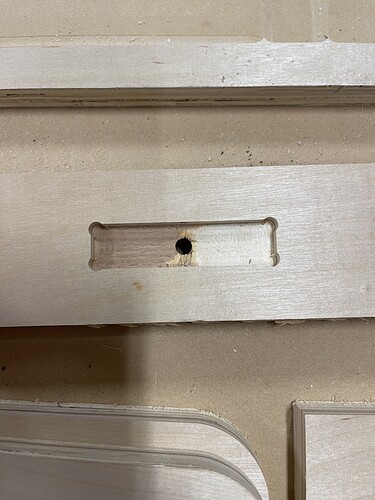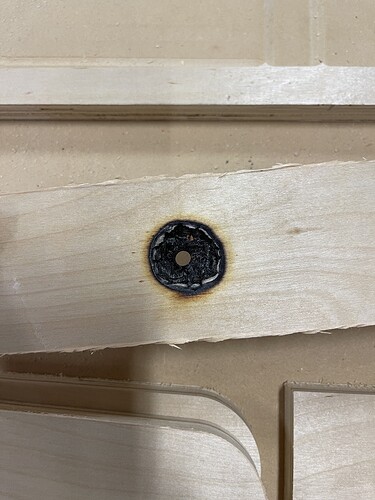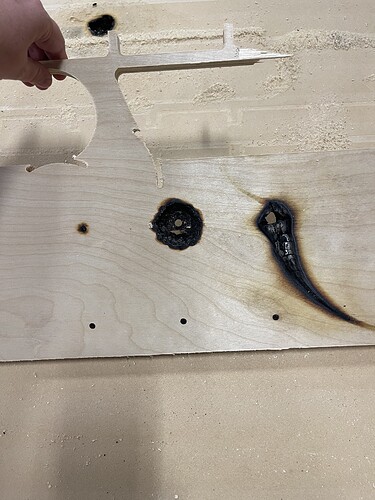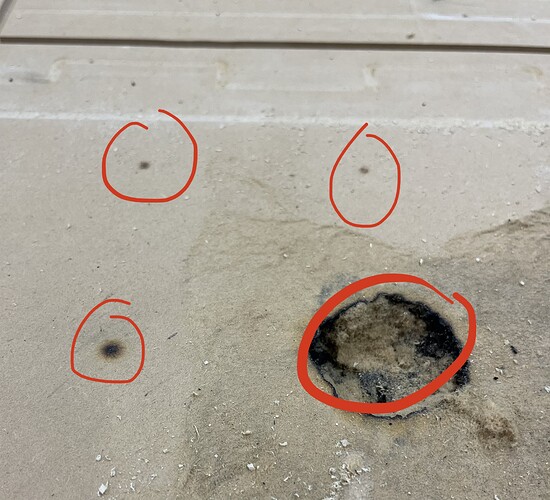Gather round y’all, I’ve got a great cnc shame story for you ![]()
I’m building a bed frame and toddler tower for my daughter. I’m using furniture bolts so everything can be disassembled easily when we inevitably grow out of them. I needed 1/4 inch holes drilled in a couple spots for the bolts.
While planning my toolpaths I debated between doing a tool change to a 1/8 bit vs just using the 1/4 I was using for all of the other toolpaths. I decided to use the 1/4 inch and do a drill toolpath with one retract to clear chips but not linger long in the hole. I’ve done this before on the old machine and the hole and bit got a tad singed but otherwise fine.
My first mistake was not considering how many of these 1/4 holes I needed. On my first plywood sheet I needed four. When done the wood was slightly singed but bit and spoilboard all fine. On the second sheet, I needed 18…. wayyyy too many to try this. I hadn’t counted or I would have reconsidered.
So of course my bit got very hot by the end of the 18 holes.
I mentioned above that I had done this on the old machine with no problem, just thinking it would be very hard on my bit.
On the new machine I was using the vacuum hold down.
A handful of these 1/4 inch holes happened to be directly above the vacuum holes where suction is the most powerful.
The vacuum pulled air into the tiny, very hot 1/4 inch holes and…… smoldering.
While drilling I could smell the holes singing and kept a close eye on them. But then the smell persisted even after that toolpath was finished and moved on to cuts.
It took probably 5 minutes before enough smoke was visible to signal something was happening.
Here is a picture of the top of the plywood, what I saw
Here is what was happening unseen underneath the plywood.
Luckily there were several people in the shop who all jumped to help when I realized what was happening. We pulled the spoilboard off and checked the vacuum bed and it is ok. We reattached the spoilboard and surfaced it since it had swelled from water to put out the embers.
Of the 18 holes about 5 of them smoldered, all ones right above a vacuum port. One hole started smoldering along the very shallow groove on the spoilboard of a previous cut.
Since usually damage to the spoilboard is related to cut depth I’ll address that. These were very shallow cuts that barely touched the spoilboard. This picture shows the singe marks of four 1/4 holes. Two in the back very light, two in the front, one of which was directly over a vacuum port and you can see what happened.
I will be paying toward a new spoilboard and will never again ise a drill path with an endmill. Rookie mistake and I should have known better. I reprogrammed my cuts to use a pocket path with 1/8 endmill and was able to finish my project.



